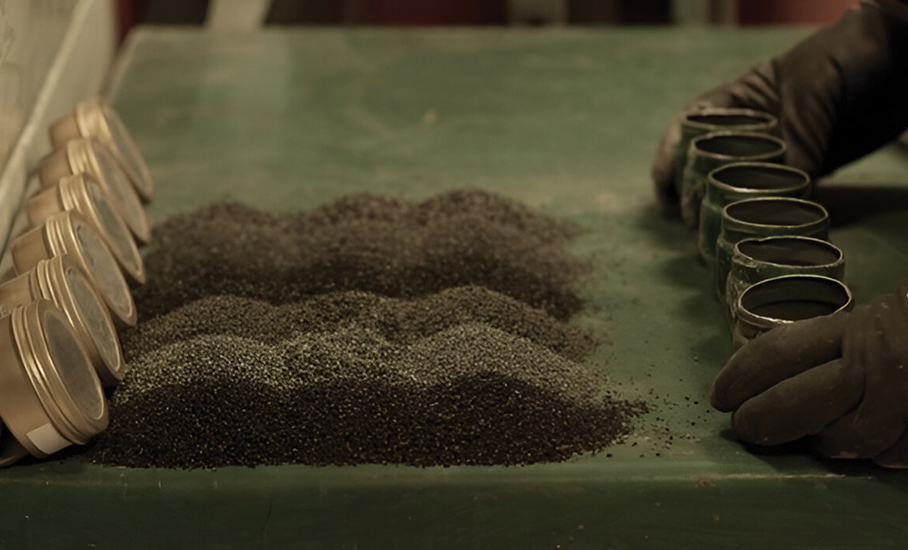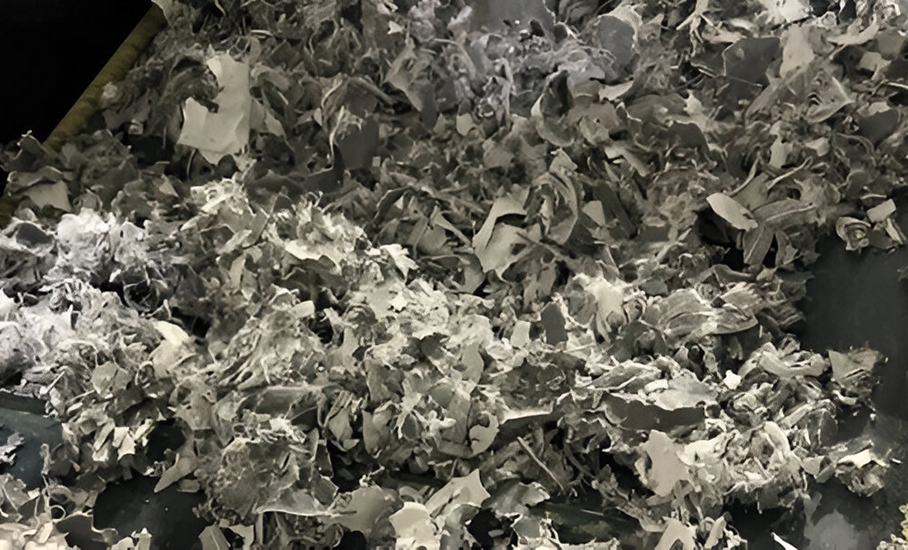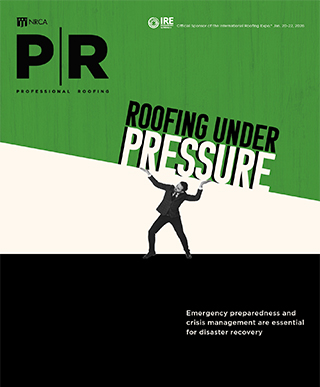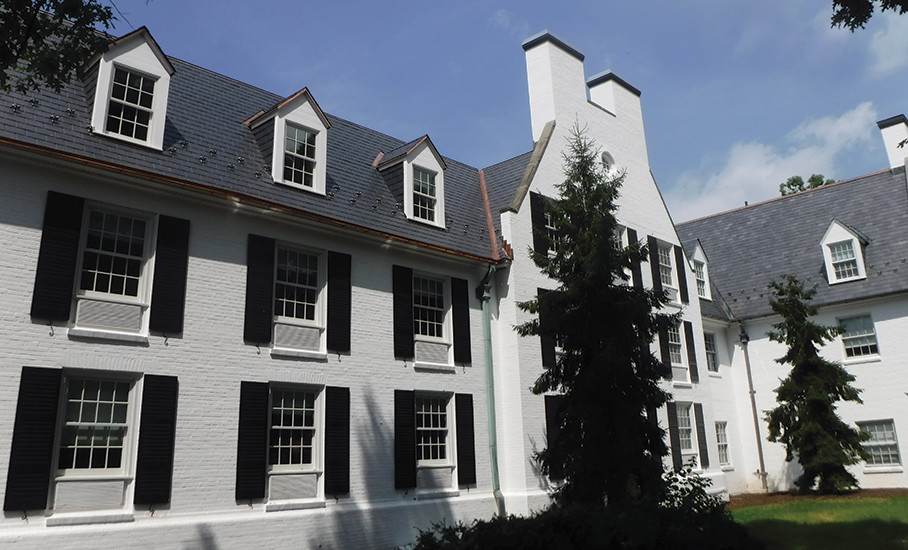
For several years, consumers have shown an interest in more sustainable building products and companies that prioritize recycling efforts. And when NASA released a study that revealed methane emissions from landfills are twice as high as previously believed, many manufacturers began to make landfill diversion a higher priority.
Holcim Building Envelope, Nashville, Tenn., and its portfolio of brands are committed to diverting waste from landfills across their facilities. This ambitious goal is part of a broader sustainability framework, which aims to minimize the environmental impact of operations by focusing on circular economy principles and waste reduction at all stages of a product’s life cycle.
Holcim Building Envelope has made key strides in this area during the past year by launching and evolving initiatives to recycle and reuse manufacturing waste. Through third-party recycling partnerships and the adoption of innovative technologies, the organization has made progress in recycling and repurposing roofing and insulation materials by giving them a second life. These efforts have allowed the recycling of large volumes of materials, including those that have traditionally been difficult to repurpose, such as TPO membranes.
The company has set 2050 net-zero targets and is prioritizing green building materials and recycling, recovery and reuse methods. The following initiatives from Holcim Building Envelope brands are helping reach this goal.

Commercial material recovery
Elevate Commercial Roofing Systems and Lining, Nashville, Tenn., has made significant progress in material recovery. Initiatives across several facilities include recovering and repurposing materials from the manufacturing of TPO membranes, EPDM and asphalt. These efforts maximize resource recovery and find new uses beyond the construction industry.
Muscle Shoals, Ala., and Wellford, S.C.: The Muscle Shoals facility is employing a new process to recycle TPO membranes through a partnership with a company that processes the membranes into pellets for further use. During the first half of 2024, the facility had recycled 300,000 pounds of material through this partnership. The facility also reintroduces material
into the manufacturing process thanks to specialized shredding equipment. The Wellford facility uses the same process. Between Muscle Shoals and Wellford, 2.8 million pounds of TPO have been recycled between January and August 2024. Muscle Shoals has been shipping two truck loads of materials per week to be repurposed via a U.S.-based partner.
Prescott, Ark.: In June 2024, the Prescott facility shipped its first truckload of 47,000 pounds of baled cardboard and plastic backing to a recycling partner. This initiative is part of a more extensive process that has become standard practice at the facility. Additionally, Prescott is leading a large-scale initiative to repurpose 3.56 million pounds of EPDM as upcycled material for various industrial applications.
Beech Grove, Ind.: At the Beech Grove facility, 2.1 million pounds of asphalt in roll form have been repurposed as an alternative fuel for cement kilns, taking the place of traditional fossil fuels like coal or petroleum coke. This provides a dual benefit by diverting end-of-life asphalt from landfills and reducing the kilns’ reliance on nonrenewable fuel sources like coal. In addition, Beech Grove shipped 8.4 million pounds of material to a waste processing partner, which redirected the waste to quarries and aggregate sites. The facility partners with a secondary-market buyer to resell nonconforming scrap materials to DIYers.
In addition, Beech Grove recovers granules during the manufacturing process. During production, roofing mats are dipped in asphalt and then granules are applied. Granules that fall off are recovered and reintegrated into the manufacturing process. To date, Beech Grove has recovered 3.5 million pounds of granules.
Salt Lake City: The Salt Lake City facility is working to recycle unusable polyisocyanurate insulation bundles and dust from utting polyisocyanurate boards. The excess material is made into compact briquettes and used as alternative fuels for cement production at a nearby Holcim cement plant in Devil’s Slide, Utah.

Residential recycling
Malarkey Roofing Products, Portland, Ore., is focusing its efforts on granule recovery and material repurposing, which include reducing landfill waste and promoting more sustainable practices throughout the manufacturing process and beyond. Malarkey Roofing Products’ roof systems are made with upcycled plastic and tires, with the average roof diverting the equivalent of about 3,200 plastic bags and five tires from landfills.
Across its facilities in Oklahoma City; South Gate, Calif.; and Portland, Malarkey Roofing Products has recovered millions of pounds of granules during the manufacturing process. These recovered granules are affixed to the edges of shingles and tucked underneath neighboring shingles, strategically placed to maximize their lifespans. The Portland facility also repurposes excess fiberglass mats as landfill cover, a practical alternative for the material.
Between Muscle Shoals and Wellford, 2.8 million pounds of TPO have been recycled between January and August 2024
Repurposing materials
Launched in 2017, Saginaw, Mich.-based Duro-Last’s “Recycle Your Roof” program is designed to reclaim and recycle roofing materials at the end of their life cycles. As part of this program, participating contractors send back old Duro-Last roof membranes to be cleaned and repurposed into products such as walkway pads or flooring or reintegrated into manufacturing processes. Duro-Last aims to recycle more than 1 million pounds of materials and reincorporate them into new materials for roofing and flooring.
A goal within reach
Initiatives to repurpose production scrap and divert end-of-life roofing materials from landfills have placed Holcim Building Envelope firmly on the path to reaching its sustainability goals. Nearly half of Holcim Building Envelope facilities have achieved zero waste to landfill, contributing to an 85% landfill diversion rate overall. To date, 1.25 million pounds of cardboard and 1.91 million pounds of metal have been successfully recycled across Holcim Building Envelope facilities.
As these efforts expand and evolve, Holcim Building Envelope is reducing its environmental impact from manufacturing and creating new opportunities to repurpose end-of-life materials in meaningful ways. With increased investment in recycling initiatives and collaboration with contractors and secondary-market buyers, Holcim Building Envelope will continue to achieve environmental progress for people and the planet.

Kevin Bretz
Executive director of environmental, health and safety, and sustainability
Holcim Building Envelop



